An Arab foreign minister once asked me: “Why are you Americans so infatuated with Iran? She is like your insane ex-girlfriend whom you endlessly pine for even though she only wants to hurt you and your life is so much better without her. Meanwhile, we Arabs are like your long-suffering wife, who only wants a better relationship with you, only to have you abandon us whenever that Persian hussy bats an eye at you.”
Sometimes others see us more clearly than we see ourselves.
For a great many Americans, the legacy of the Iranian revolution is the enduring enmity of the Islamic Republic toward the United States. Iranians are increasingly at pains to rationalize their regular, if ritualized, chants of “Death to America,” but for Americans, the words still bite. It is hard for Americans to reflect on the 40 years since the revolution and understand why Tehran’s antagonism has persisted for so long. So many Americans see it as irrational, wasteful, foolish, even childish. It is. But what we must realize, hard as it may be, is that it is not accidental. It is not the product of misunderstandings or missed opportunities. It is purposeful. It is deliberate.
While American leaders have run hot and cold on Iran, most of the presidents who have served during that 40-year span have sought genuine reconciliation with Iran. That they have failed time and again has little to do with their own mistakes and everything to do with the fact that Iran’s leadership has never wanted the same.
The Long, Unrequited Courtship
Right from the start, the United States sought good relations with the Islamic Republic. After the shah’s flight from Iran, the Carter administration tried to open a diplomatic channel to Tehran. For Carter, the fall of the shah was no great loss. He had railed against the shah’s human rights abuses and was willing to embrace a new Iranian regime that seemed to be far more popular with the Iranian people.
Iran’s response was swift and clear. No. Tehran did not want a relationship with Washington. The United States was Iran’s eternal enemy, and the Islamic Revolution wanted only death to America. The seizure of the American embassy and the holding of 52 U.S. diplomats as hostages for 444 days became the defining statement of Tehran’s policy toward Washington.
It is worth noting that the American overture followed a clandestine effort to encourage a counterrevolution by the Shah’s generals. However, there are three critical facts bearing on this issue. First, the American effort lasted little more than a week because Washington quickly recognized that such a gambit was impossible. Second, neither President Carter nor Secretary of State Cyrus Vance were ever enthusiastic about the idea, saw it as a last-resort contingency plan if all else failed, and were relieved when it was mooted. They had always preferred to offer the new revolutionary Iranian regime the olive branch rather than the stick. Last, the Iranians were unaware of this effort until many years later, and so it cannot serve as an excuse for Tehran’s snub.
For all his bluster, Ronald Reagan tried too. It began with his sincere desire to free American hostages being held by Iranian allies and proxies in Lebanon in the mid-1980s. (These were seized after Iran finally freed the original hostages from the embassy). It was this desire that spawned the Iran-Contra imbroglio, in which the United States sold missiles to Iran—for its war with Iraq—and then channeled the money from those sales to the Contras, guerrillas fighting the Sandinista regime in Nicaragua. Sordid as the affair was, Reagan’s hope was that the weapons sales would prompt Tehran to release the hostages, convince them not to take any more, and make possible a reduction of tensions between the two countries. Indeed, some of Reagan’s key subordinates hoped that it could be the start of a wider rapprochement and Reagan may have as well.
There were Iranians eager to reciprocate. The evidence suggests that they too hoped that the arms sales might lead to a wider warming of relations. But their hopes withered under the hostility to America from the more powerful hardline figures in the regime. The secret relationship was exposed, and its Iranian proponents were forced to disavow their intentions.
George H. W. Bush was always more prudent, never rushing in where wise men feared to tread. Yet he too famously blew a kiss Tehran’s way in his inaugural address, pointedly suggesting to Iran that “goodwill begets goodwill.” From Iran there was no answer. But actions speak louder than words and throughout the 1990s, Iran’s actions spoke volumes about its true feelings toward America. Iran instigated repeated terrorist attacks against American allies from Israel to Bahrain, killed its own dissidents abroad, harassed American military forces in the Persian Gulf, and even attacked a U.S. military housing complex Saudi Arabia, killing 19 Americans and wounding over 400 others.
Yet through it all, even furious at Iran’s seemingly gratuitous calumnies, America nursed its yearning for a better relationship.
Yet through it all, even furious at Iran’s seemingly gratuitous calumnies, America nursed its yearning for a better relationship.
In 1997, Iranians chose Mohammed Khatami as their new president. Khatami won in a landslide and in typically cryptic Persian fashion, he let it be known that he believed Iran should normalize relations with the United States. President Bill Clinton leapt at the chance. Against the advice of more cautious advisors, Clinton made a determined effort to demonstrate that the United States wanted the same.
Iran’s bureaucracy remained fettered by the hardline, anti-American leadership. So Khatami had to pursue his outreach to Washington indirectly, employing academics, journalists, and other unofficial emissaries. Clinton’s team eagerly met with Khatami’s messengers and explicitly asked what steps the United States might take to signal its interest in rapprochement and to enable Khatami to make it possible from the Iranian side. During Clinton’s final two years in office, the United States made eleven separate, unilateral gestures to Iran, from allowing visits by Iranian wrestlers and clergy, to removing Iran from the U.S. list of major narcotics smuggling states, all the way to apologizing for America’s role in the Mossadeq coup and exempting Iranian pistachios and carpets from American sanctions.
It all came to naught. Iran’s hardliners struck back at Khatami and crushed him. Khatami’s proposed reforms threatened their domestic policies and position as much as their cherished enmity with the United States. In 1999 and 2000 they forced him to crush student riots in support of his own reforms, much like Stalin had forced Molotov to denounce his own beloved wife. Khatami was allowed to serve out his term—he was even re-elected in 2001—but he was toothless, reduced to an impotent symbol of what might have been, left to taunt Iranians and Americans who had dreamt of a different relationship with the Tehran regime.
The failure of the Clinton-Khatami bid for rapprochement was not lost on George W. Bush’s foreign policy team. They never had any love for Iran and whether this confirmed their belief that improved relations were a pipe dream, or merely justified the course of action they always meant to take is impossible to know. But it was no accident that they included Iran as part of an “Axis of Evil” with Iraq and North Korea in Bush’s infamous 2002 State of the Union address.
Of course, having declared Iran evil, they were immediately forced to ignore it. Their invasions of Afghanistan and Iraq proved something of an unexpected boon to Iran and something of an epic catastrophe for America. The invasions removed Iran’s two worst antagonists: the Taliban and Saddam Hussein. Of course, the chaos that the United States left in their place to Iran’s east and west created new problems for Tehran, but also new opportunities—opportunities that the Iranian regime would exploit to magnify its sway and further harm the United States.
Iran would repay the Bush administration many times over for the “Axis of Evil” speech. In Iraq in particular, Tehran supported a vast range of murderous anti-American groups. Iranian personnel and their Hezbollah allies not only encouraged and equipped these groups to kill Americans, but at times planned and participated in the attacks themselves. Hundreds of Americans died as a result. The Bush administration did nothing in response, albeit largely because they were miserably bogged down in Iraq and Afghanistan and wisely (for a change) recognized that picking still another fight with Iran was unlikely to improve their fortunes.
Iran would repay the Bush administration many times over for the “Axis of Evil” speech.
Their Last, Best Hope
Barack Obama came to the presidency with an eye toward making peace with Iran. From the very first, his administration broadcast on all frequencies, public and private, that it wanted to consummate the elusive rapprochement. In 2009, in the wake of Iran’s stolen presidential elections, the Obama administration tried as hard as it could for as long as it could to say nothing, believing that any statement of American support for the millions of Iranians demanding the end of the Islamic regime might kill their bid for reconciliation. When the howls of American domestic and international outrage at Washington’s silence became too much, the administration’s criticisms were still bland and perfunctory to the point of being counterproductive. Nevertheless, Tehran seized on them to blame the would-be second Iranian revolution on American machinations.
Yet Obama would not be put off. In his second term, he redoubled his efforts, this time aided by an equally ardent Secretary of State, John Kerry. Then the Iranians seemed to signal some reciprocation by electing Hassan Rouhani as their new president. Rouhani explicitly ran on a platform of saving Iran’s economy by cutting a deal on Iran’s nuclear program with the United States and the international community. Thus began the negotiations that would ultimately culminate in the Joint Comprehensive Plan of Action (JCPOA), colloquially known as the Iranian nuclear deal.
Both Obama and Kerry hoped that the nuclear deal would pave the way toward a wider reconciliation between the two countries. Indeed, it’s hard to understand their willingness to agree to the terms of the JCPOA—which only maintained the tightest constraints on the Iranian nuclear program for 10 to 15 years—except in light of their expectation that the agreement would lead to a comprehensive settlement of the Iranian-American conflict that would eventually render the agreement unnecessary. Rouhani wanted that rapprochement too. And so did his foreign minister, Mohammed Javad Zarif, who forged a close relationship with Kerry and also hoped to use the JCPOA as a wedge to open the door to normalized ties.
They were all disappointed. In the words of Karim Sadjadpour, senior fellow at the Carnegie Endowment for International Peace, while Obama and Kerry—and Rouhani and Zarif—all hoped the JCPOA would prove to be transformative, Khamenei and Iran’s hardliners were determined that it remain merely transactional. A simple deal, curbs on the Iranian nuclear program in return for a lifting of American and international sanctions. No more. Long before Trump came to office and killed the deal, Khamenei had made clear that it would never be anything more than it was. He would never allow it to be the end to Iranian-American conflict.
The United States has never had a president more desirous of turning Iran from foe to friend, and we may never have another one. Obama openly disdained America’s Middle East allies and even took Iran’s side against them in regional disputes, going so far as to declare that the Saudis needed to learn to “share” the Middle East with Iran. He agreed to the JCPOA in the face of tremendous political criticism. Both he and many of his key advisors hoped that a nuclear deal with Iran could be the gateway toward a wider rapprochement, and Secretary Kerry tried every door before, during, and after the nuclear negotiations to try to make that happen.
The Iranians never had an American president more willing to accommodate their needs and fears, and once again they spurned him. Yet Ayatollah Khamenei and the rest of Iran’s leadership were not interested in the better relationship that Obama and Kerry craved. If Iran could not accept what Obama and Kerry proffered, it is hard to conclude anything other than that those who matter in Tehran, those who actually make Iran’s foreign policy, are determined to treat the United States as their enemy, regardless of what we do or why.
Coping with Hate
The history of Iranian-American relations in the 40 years since the 1979 revolution is replete with mistakes, missed opportunities, and misunderstandings. Both sides have done terrible things to each other. Both can claim justification for their every savage act against the other. For every U.S. policy meant to hurt Iran, Americans can cite a prior Iranian action meant to hurt the United States. And for every Iranian action deliberately intended to hurt America, Iranians can cite a prior U.S. policy meant to hurt Iran.
Yet the one vital difference is this: Of the seven American presidents to serve since the Iranian revolution, at least four and arguably five wanted an end to the hostilities with Iran and made real efforts to bring that about. In most cases, they paid a considerable political price to do so. And while there certainly have been many Iranians, many Iranian officials, and at least three Iranian presidents who seemed to want the same, the Iranian regime as a whole and its two supreme leaders—Iran’s equivalent to the American president—have never shown the least interest. Instead, they have systematically shut down every effort toward meaningful peace between the two countries.
Both Khomeini and Khamenei cherished their anti-Americanism. For both, it was never a tool toward a wider goal but a core element of their rule and their philosophies. It certainly has served certain specific aims, but even when American administrations have offered what could have been compelling incentives to embrace warmer ties and reduced tensions, they never would.
Perhaps someday, America’s cherished desire for better ties with Iran will be reciprocated by the leaders of Iran. But the history of the past 40 years seems to suggest that that will never be more than a tantalizing dream until new leaders take the helm in Tehran. Until then, the only intelligent course for the United States is to steer clear of the Iranians as best we can and treat them like enemies when we must, not because we want them to be, but because their leaders insist on it, no matter what we may do.
The Brookings Institution is committed to quality, independence, and impact.
We are supported by a diverse array of funders. In line with our values and policies, each Brookings publication represents the sole views of its author(s).

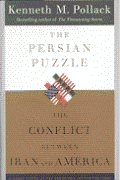
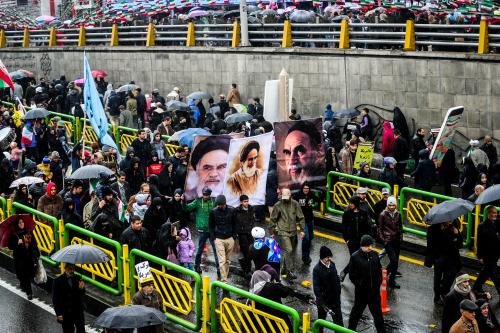
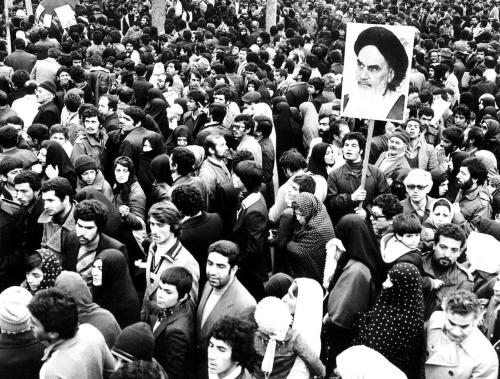
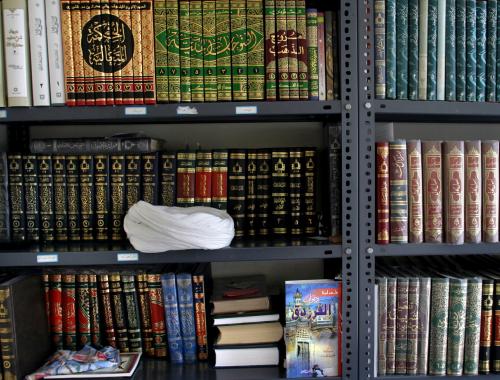



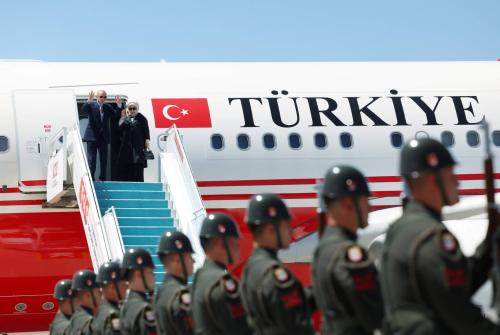
Commentary
America’s torch song for Tehran
March 8, 2019